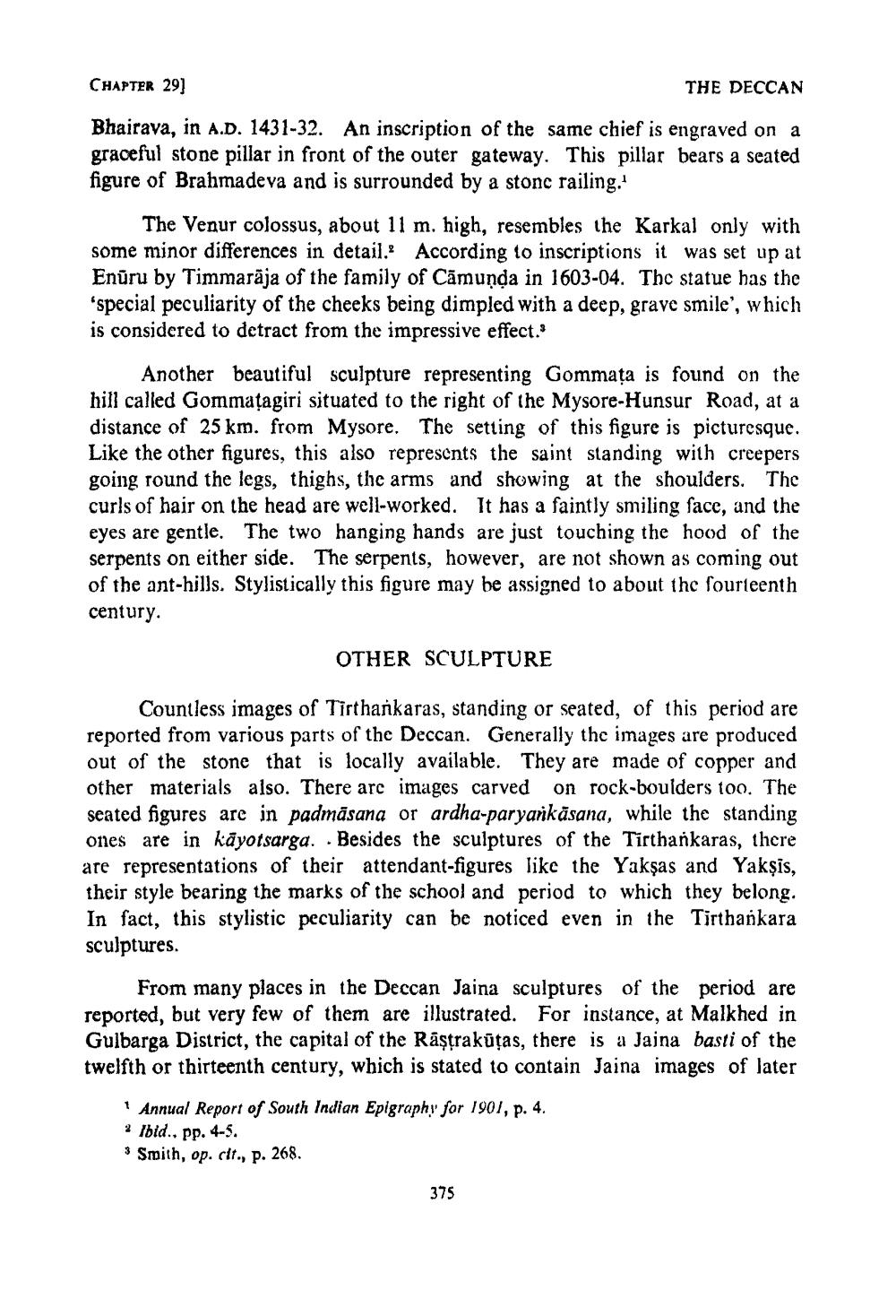________________
CHAPTER 29]
THE DECCAN
Bhairava, in A.D. 1431-32. An inscription of the same chief is engraved on a graceful stone pillar in front of the outer gateway. This pillar bears a seated figure of Brahmadeva and is surrounded by a stonc railing.
The Venur colossus, about 11 m. high, resembles the Karkal only with some minor differences in detail. According to inscriptions it was set up at Enūru by Timmarāja of the family of Cāmunda in 1603-04. The statue has the special peculiarity of the cheeks being dimpled with a deep, grave smile', which is considered to detract from the impressive effect."
Another beautiful sculpture representing Gommata is found on the hill called Gommațagiri situated to the right of the Mysore-Hunsur Road, at a distance of 25 km. from Mysore. The setting of this figure is picturesque. Like the other figures, this also represents the saint standing with creepers going round the legs, thighs, the arms and showing at the shoulders. The curls of hair on the head are well-worked. It has a faintly smiling face, and the eyes are gentle. The two hanging hands are just touching the hood of the serpents on either side. The serpents, however, are not shown as coming out of the ant-hills. Stylistically this figure may be assigned to about the fourteenth century.
OTHER SCULPTURE
Countless images of Tirthankaras, standing or seated, of this period are reported from various parts of the Deccan. Generally the images are produced out of the stone that is locally available. They are made of copper and other materials also. There arc images carved on rock-boulders too. The seated figures are in padmāsana or ardha-paryankāsana, while the standing ones are in kāyotsarga. . Besides the sculptures of the Tirthankaras, there are representations of their attendant-figures like the Yakşas and Yaksis, their style bearing the marks of the school and period to which they belong. In fact, this stylistic peculiarity can be noticed even in the Tirthankara sculptures.
From many places in the Deccan Jaina sculptures of the period are reported, but very few of them are illustrated. For instance, at Malkhed in Gulbarga District, the capital of the Rāştrakūtas, there is a Jajna basti of the twelfth or thirteenth century, which is stated to contain Jaina images of later
Annual Report of South Indian Epigraphy for 1901, p. 4. ? ibid., pp. 4-5. * Smith, op. cit., p. 268.
375




